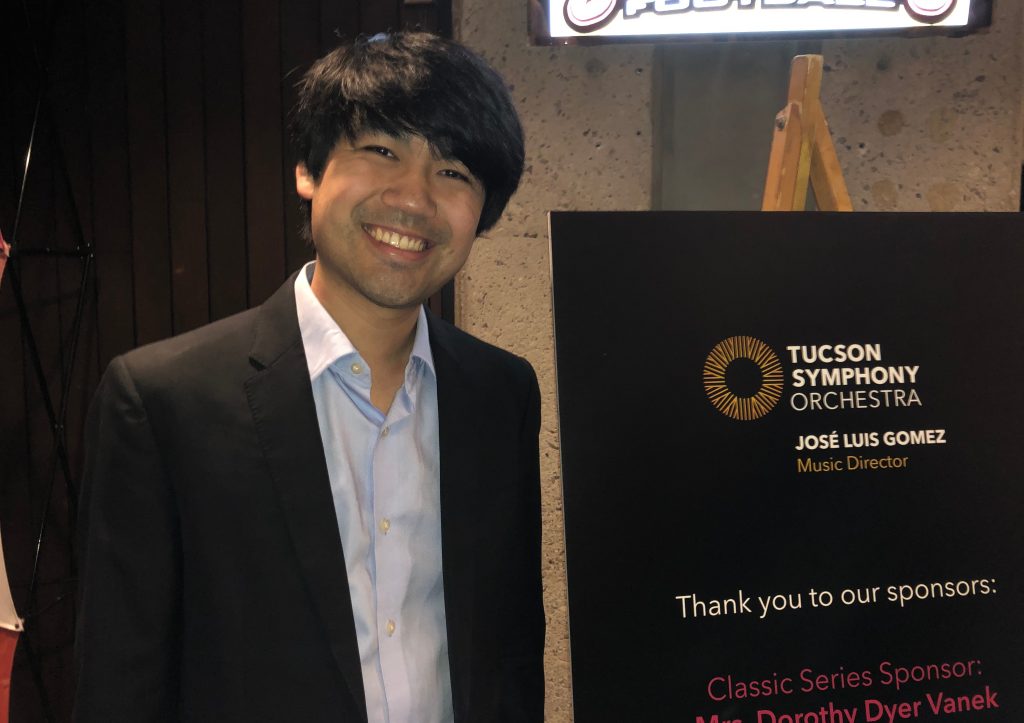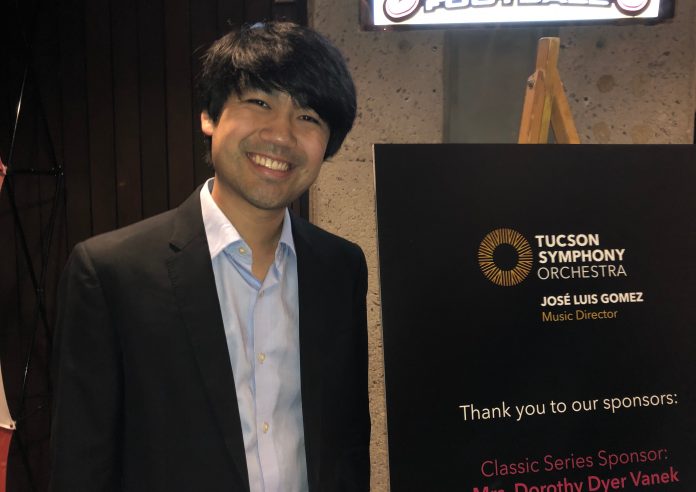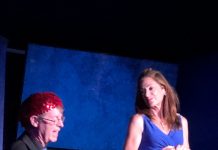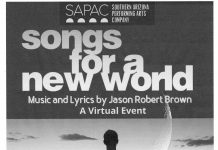Even as he was about to play Concerto No. 2 for Piano by Saint-Saens, pianist Sean Chen spoke in some awe of Ludwig von Beethoven.
“After Beethoven died in 1827 he left a shadow over all composers. The French composers who followed him, including Saint-Saens, did not compose in the style of Beethoven. In the second piano concerto, you will not find a sonata form or even the fast-slow-fast form. It’s almost like an organ prelude that opens it. There are a lot of organ influences here; the way he uses the winds is like organ registration.”
Chen, who received a Master of Music from Julliard, described the concerto as “melodramatic and technically very brilliant, although it is not played as much in competitions as pieces by Rachmaninoff and Tchaikovsky. It’s like driving a really fast car, which is a challenge as we are not playing on the instruments he was writing for.” Chen explained the evolution of the piano, from an instrument with less resonance and narrower keys, inhibits the ability to play compositions as nineteenth composers intended. “It is unreasonable to expect technical perfection,” he admitted, saying “we are not going to reach the speeds Saint-Saens asked for.”
After a largely somnabulant opening piece from Venezuelan composer Antonio Estevez, Chen launched the 24-minute piano concerto backed by the Tucson Symphony Orchestra. The opening glissando leads to an emphatic chord in the lower register that forces the orchestra to respond with a corresponding degree of angst. A frenzied passage on the piano elicits a degree of harmonic resistance from the orchestra but this does not dissuade the piano from spiraling into a destructive path.
Chen handles this passage with fluidity and panache. His extended piano solo finally approaches a redemptive phase that is at first gingerly welcomed by a naturally cautious orchestra, but then resoundingly so as the first movement ends.
The second movement with its lightning fast notes imbues it with a sprightly quality. The orchestra goes along for the ride, with the piano very much in the drivers’ seat of that fast car Chen spoke of. The journey takes him to the third movement, designed by Saint-Saens as a showcase for such a talented pianist to show off his skills. One audience member I spoke to was not impressed with all these pianistic bells and whistles, but Chen handled the task superbly and was greeted with a rousing standing ovation. Flawless and highly artistic.
The last half of the concert featured an iconic work. Reviewing Beethoven’s 5th Symphony would be pretentious, so I will instead quote from Tucson Symphony music director Jose Gomez, and local music student Conlan Salgado. Gomez said “it stands alone in the classical repertoire as a monument to classical music: it’s a human imprint in our memories.”
Beethoven once said that “The first notes of the fifth Symphony are the sounds of fate knocking at my door.” Gomez touched on this in his remarks before the concert, saying the symphony “has a very clear message of destiny and struggle. The sense of destiny calling persists as the symphony moves from C minor to the more heroic C major. The transition of tonalities between movements is a clear path. Beethoven had huge struggles but No 5 elevates human beings and all the beauty that we are. It’s incredibly amazing this music is more alive than ever.”
“Of all Beethoven’s symphonies, I believe that the fifth is the most existential,” writes Salgado. “The melody of discovery comes in the very opening lines. It is also distinctive of Beethoven because it reinvents itself at least four times within the piece. This is only my opinion, but if the creation of the world could be set to music, I believe it would be Beethoven’s 5th Symphony.”
The Tucson Symphony Orchestra will perform this program again on Dec. 8 at 2pm, at the Tucson Music Hall.
Photo by C Cunningham
For more on Beethoven’s legacy, read my recent article at this link:














